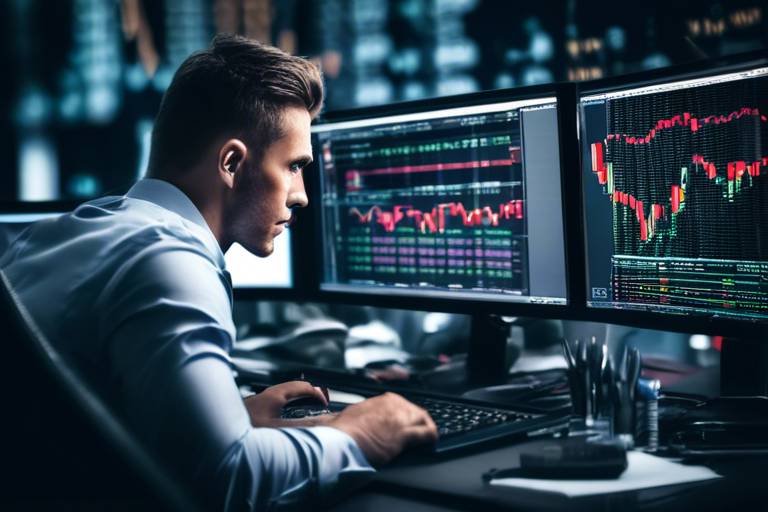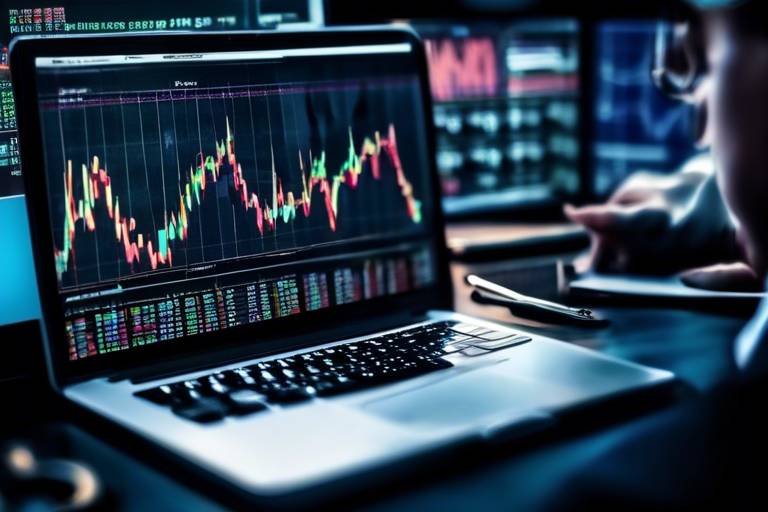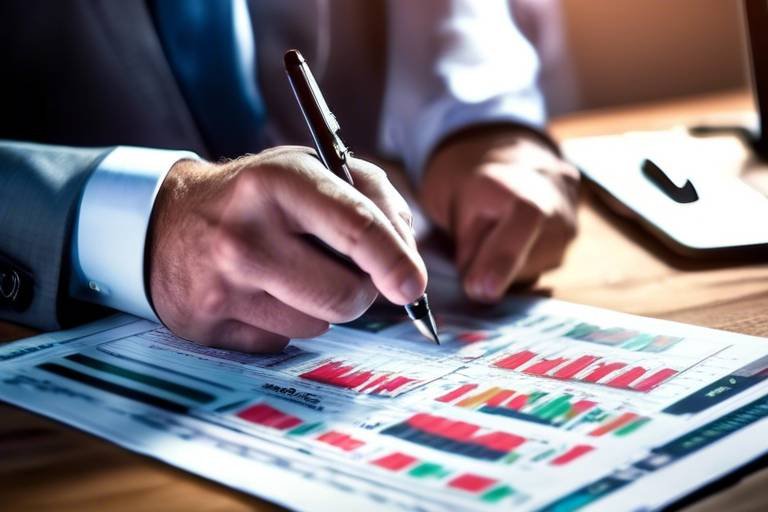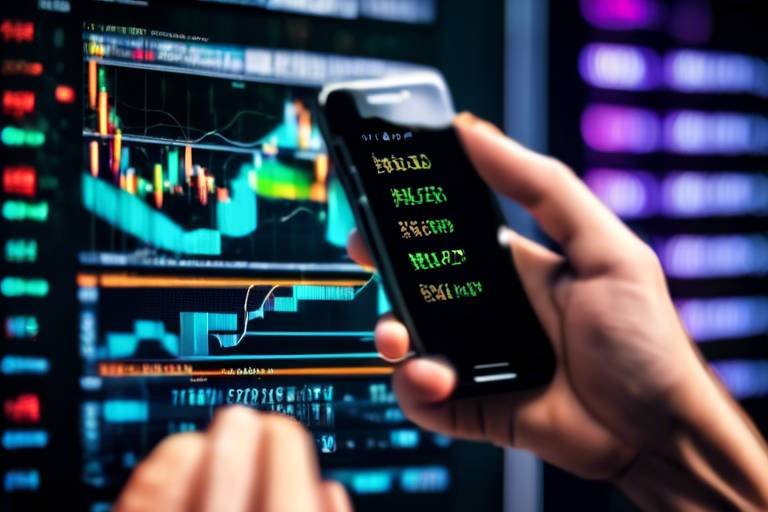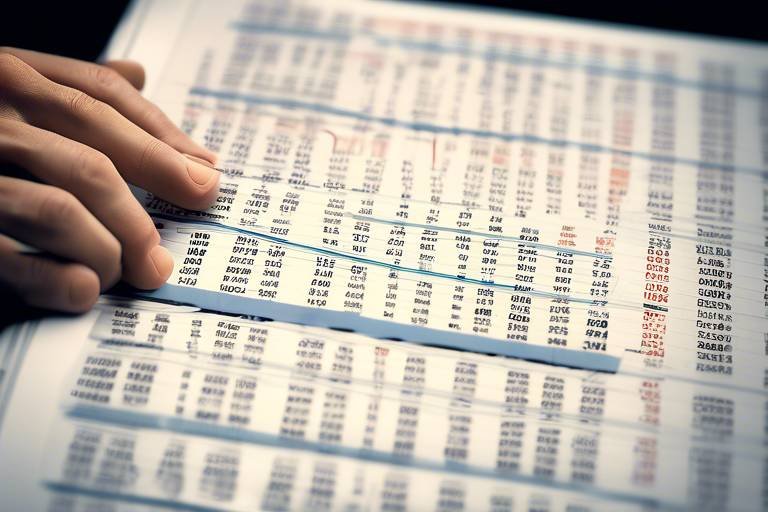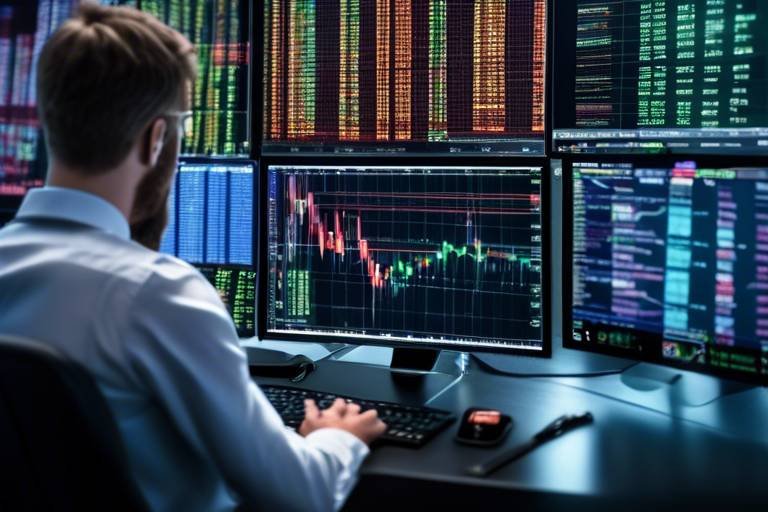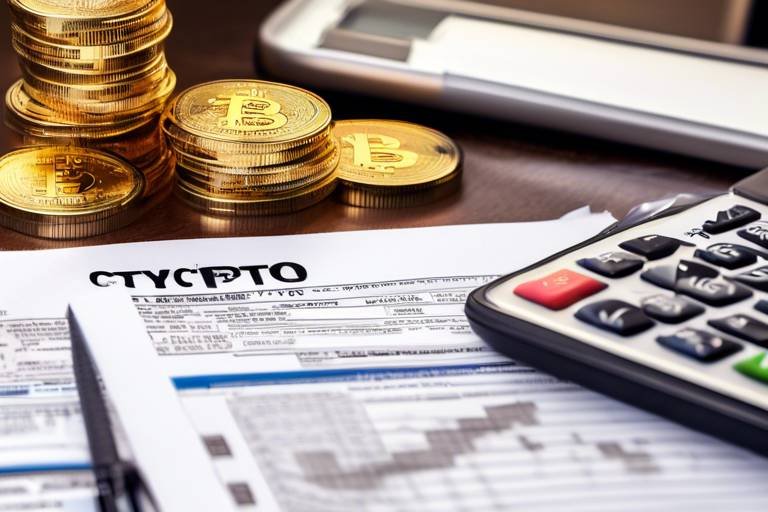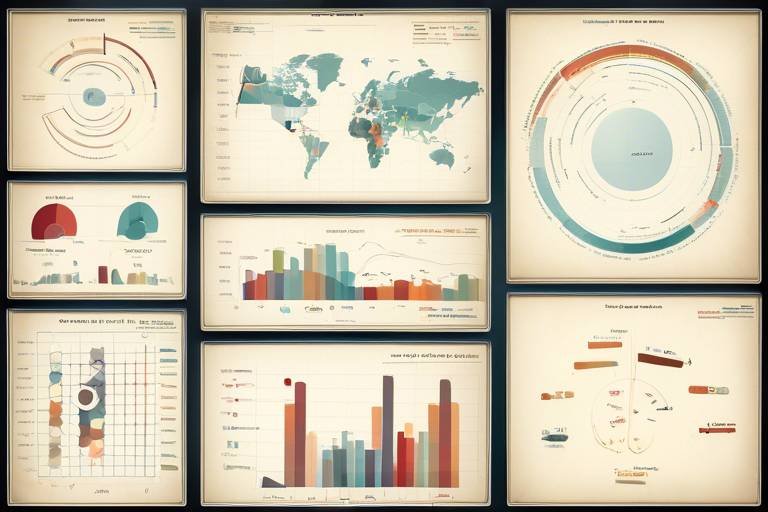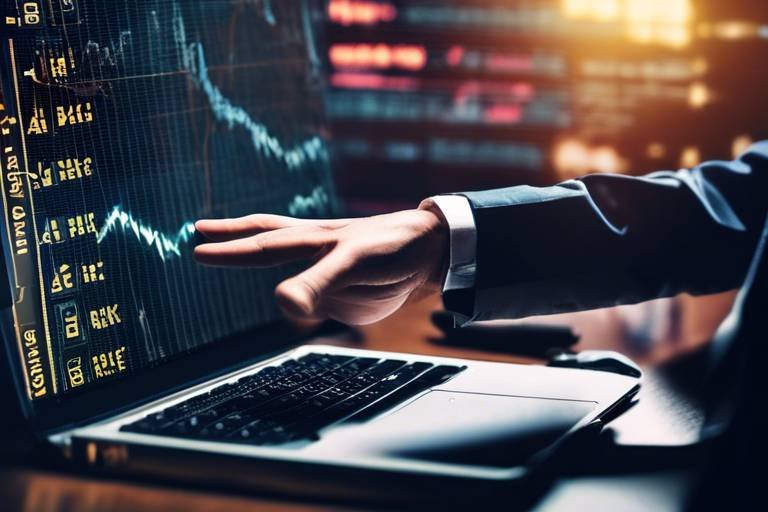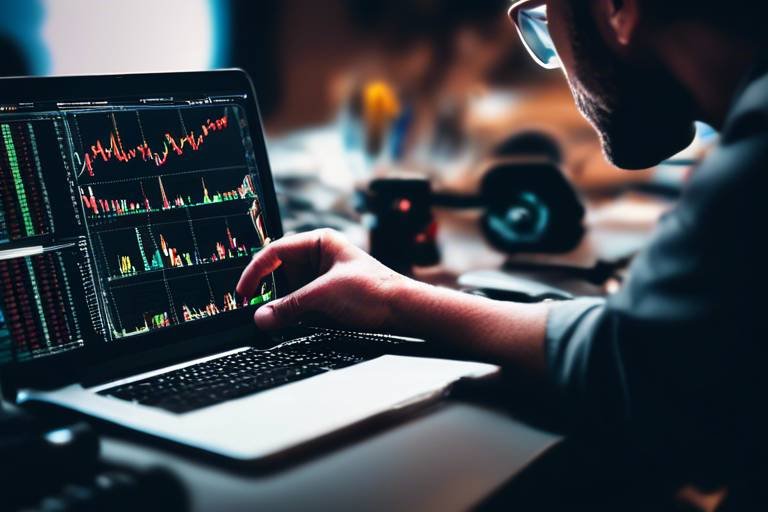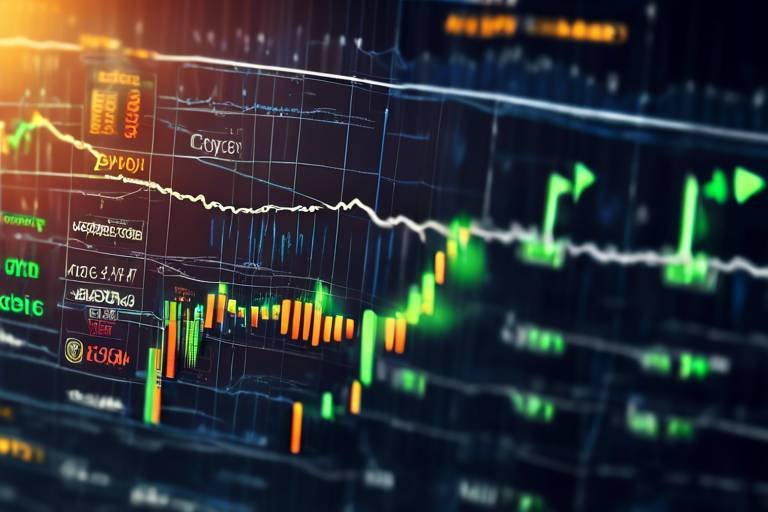How to Utilize Backtesting in Your Trading Strategy
In the ever-evolving world of trading, having a robust strategy is paramount. But how do you know if your strategy is actually going to work? Enter backtesting—a powerful tool that allows traders to test their strategies against historical data before risking real money. Imagine trying to navigate a new city without a map; backtesting is like having a GPS that shows you the best routes based on past traffic patterns. By simulating trades as if they were executed in real-time, traders can evaluate the effectiveness of their strategies, identify potential pitfalls, and refine their approaches. This article dives deep into the significance of backtesting, its benefits, common mistakes to avoid, and the best tools available to traders.
Backtesting is not just a fancy term thrown around in trading circles; it’s a fundamental process that can make or break your trading success. At its core, backtesting involves applying your trading strategy to historical market data to see how it would have performed. Think of it as a rehearsal for a play—before the big performance, you want to ensure that everything flows smoothly. By analyzing past data, traders can gain insights into how their strategies would have reacted to various market conditions. This process not only helps in evaluating the effectiveness of the strategy but also builds a solid foundation for making informed trading decisions in the future.
So, what’s the big deal about backtesting? Well, the benefits are numerous and can significantly enhance a trader's performance. Here are some key advantages:
- Risk Assessment: Backtesting allows traders to evaluate the risk associated with their strategies. By understanding potential losses in different scenarios, traders can make more informed decisions.
- Strategy Optimization: Through backtesting, traders can refine their strategies, tweaking parameters to maximize returns while minimizing risks.
Moreover, backtesting can help traders improve their confidence in their strategies. When you see that your approach has worked in the past, it’s easier to stick to it during volatile market conditions.
One of the most significant benefits of backtesting is the enhancement of strategy reliability. By analyzing historical performance, traders can assess how dependable their strategies are. It’s like testing a new recipe before serving it at a dinner party—you want to know it tastes good! This analysis not only boosts confidence in trading decisions but also reduces emotional biases. When a trader is emotionally invested, they may deviate from their strategy during crucial moments. Backtesting serves as a safety net, ensuring that decisions are based on data rather than fleeting emotions.
Backtesting also shines a light on the weaknesses in trading strategies. Just like a coach reviews game footage to identify areas for improvement, traders can uncover flaws that may not be apparent at first glance. For instance, a strategy that works well in a bull market might falter during a bear market. By identifying these weaknesses, traders can make necessary adjustments, leading to more robust trading approaches that can withstand different market conditions.
Another exciting aspect of backtesting is the ability to simulate various market conditions. Traders can test how their strategies would perform during different scenarios, such as economic downturns, market booms, or unexpected news events. This kind of preparation is invaluable; it’s like a pilot practicing for emergency situations in a flight simulator. By testing multiple scenarios, traders can better prepare for unexpected market movements, ensuring they have a plan in place no matter what happens.
With the rise of technology, there are numerous tools and software available to assist traders in backtesting. Popular platforms like MetaTrader, TradingView, and Amibroker offer various features that can help streamline the backtesting process. These tools allow traders to input their strategies, run simulations, and analyze results effectively. When choosing the right backtesting platform, consider factors such as ease of use, the availability of historical data, and the ability to customize your tests.
Despite its advantages, many traders make mistakes during backtesting that can lead to misleading results. It’s essential to be aware of these common pitfalls to ensure your assessments are accurate.
One of the most significant dangers of backtesting is overfitting. This occurs when a strategy is too tailored to historical data, making it less likely to perform well in the future. It’s akin to a student memorizing answers for a specific test instead of truly understanding the material. To avoid overfitting, traders should focus on creating strategies that are robust yet flexible enough to adapt to changing market conditions.
Another common mistake is ignoring market changes. Market conditions are constantly evolving, and what worked in the past may not necessarily work in the future. It’s crucial for traders to stay updated on current market dynamics and incorporate this information into their backtesting processes. Failing to do so can lead to ineffective trading strategies that may result in significant losses.
Q: How long should I backtest a trading strategy?
A: Ideally, you should backtest your strategy over a significant period, ideally spanning multiple market cycles. This allows you to see how your strategy performs under different conditions.
Q: Can I rely solely on backtesting for my trading decisions?
A: While backtesting is a valuable tool, it should not be the only factor in your trading decisions. Always combine backtesting results with current market analysis and risk management practices.
Q: What is the best software for backtesting?
A: The best software depends on your specific needs, but popular options include MetaTrader, TradingView, and Amibroker, each offering unique features and capabilities.
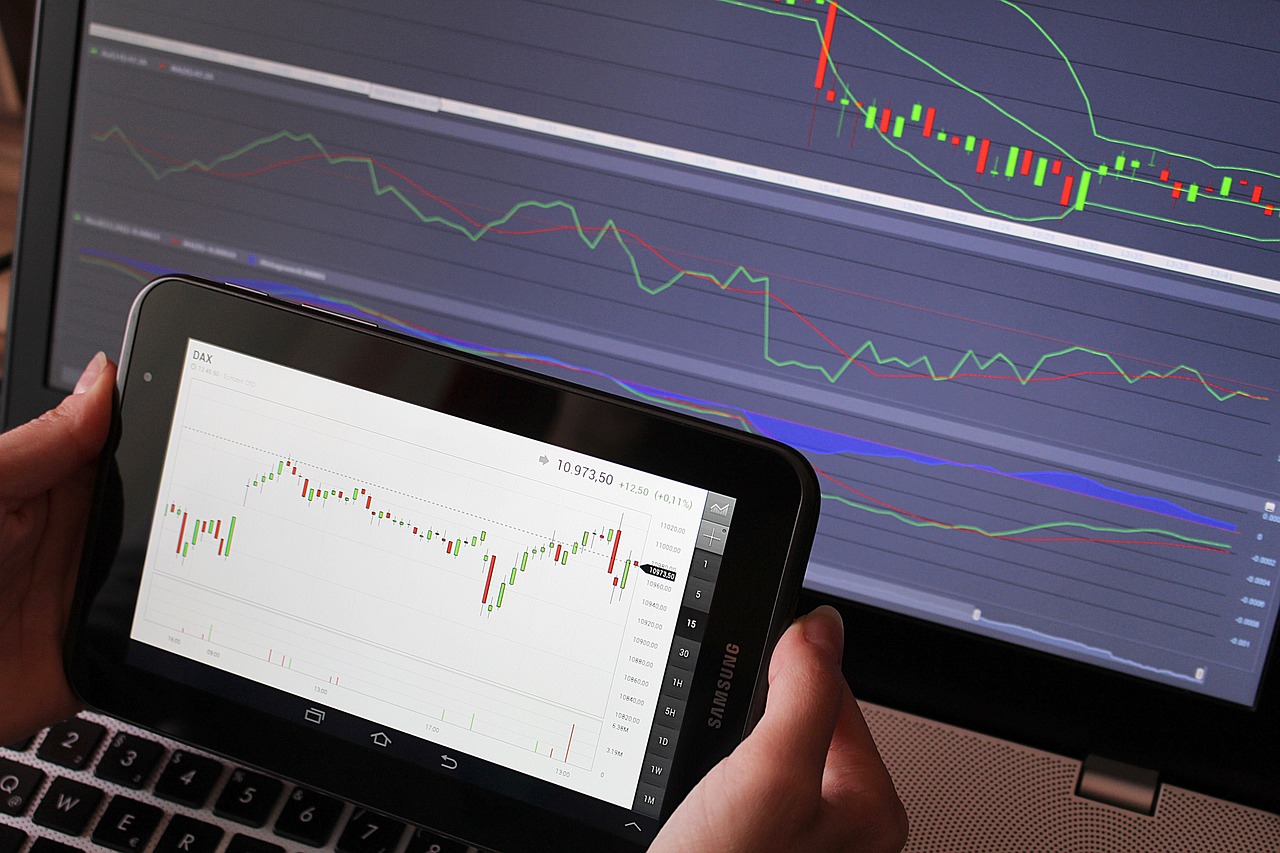
Understanding Backtesting
Backtesting is a crucial process in trading that involves testing a strategy against historical data. Imagine you're a detective trying to solve a mystery; you wouldn't just rely on gut feelings, right? You'd dig into the past, examining clues and patterns to piece together what happened. That's precisely what backtesting does for traders—it provides a way to evaluate how effective a trading strategy would have been if it had been applied in the past.
The significance of backtesting lies in its ability to offer tangible evidence of a strategy's performance. By simulating trades based on historical data, traders can see not only how much profit they could have made but also how often they would have faced losses. This process helps in identifying the strengths and weaknesses of a trading strategy, giving traders a clearer picture of what works and what doesn't. Without backtesting, traders might rely solely on theory or intuition, which can be a recipe for disaster in the unpredictable world of trading.
Moreover, backtesting helps traders refine their strategies by allowing them to adjust parameters and see how those changes would have affected past performance. For instance, if a trader realizes that a certain moving average crossover strategy performed poorly during a specific market condition, they can tweak the parameters and re-test it. This iterative process not only enhances the strategy but also builds a trader's confidence in their decision-making. It's like tuning a musical instrument; the more you practice and adjust, the better the harmony you create.
In essence, backtesting is not just about looking at numbers; it's about understanding the market's behavior over time. It allows traders to prepare for various scenarios and equips them with the knowledge needed to make informed decisions. As the saying goes, "Those who cannot remember the past are condemned to repeat it." In trading, remembering the past through backtesting can mean the difference between success and failure.

Benefits of Backtesting
Backtesting is more than just a buzzword in the trading community; it’s a game-changer for traders looking to refine their strategies. Imagine trying to navigate a maze without knowing the layout—frustrating, right? That’s what trading without backtesting feels like. By simulating your trading strategy against historical data, you can gain invaluable insights into its potential performance. This practice not only helps in assessing the viability of your strategy but also provides a clearer picture of how it might react under various market conditions.
One of the most significant benefits of backtesting is its ability to enhance risk assessment. Traders can evaluate how much risk they are taking on with each trade by analyzing past performance metrics. For instance, if your strategy shows a tendency to lose significantly during a market downturn, you can adjust your approach before you find yourself in a similar situation in real-time. This proactive measure is crucial in today’s fast-paced trading environment.
Moreover, backtesting allows for strategy optimization. By reviewing the outcomes of your trades, you can identify which elements of your strategy are working and which are not. This process is akin to fine-tuning a musical instrument; small adjustments can lead to a much more harmonious performance. For example, if you find that a particular entry point consistently leads to losses, you can tweak your parameters and test again, gradually honing in on a more effective strategy.
Let’s not forget the psychological aspect of trading. Backtesting can significantly improve strategy reliability. When traders see positive results from their historical simulations, it builds confidence in their decisions. It’s like having a safety net that allows you to make trades without the paralyzing fear of the unknown. By relying on data rather than emotions, you can make more rational decisions, which is essential in the often volatile world of trading.
Another key advantage of backtesting is the ability to identify weaknesses in your strategy. Every strategy has its flaws; the goal is to uncover them before they lead to significant losses. Through backtesting, traders can pinpoint areas of improvement, whether it’s a specific indicator that isn’t performing as expected or a certain market condition that throws a wrench in their plans. This process of discovery is crucial for developing a robust trading approach that can withstand the test of time.
Additionally, backtesting allows traders to simulate multiple scenarios. Markets are unpredictable, and conditions can change rapidly. By testing your strategy across different historical periods and varying market conditions, you prepare yourself for the unexpected. It’s like practicing for a sports game; you wouldn’t just practice against one team, right? You’d want to simulate various opponents and strategies to be ready for anything that comes your way.
In summary, the benefits of backtesting are vast and multifaceted. From enhancing risk assessment and optimizing strategies to building confidence and identifying weaknesses, backtesting is an essential tool for any trader. It empowers you to make informed decisions based on historical data rather than gut feelings, ultimately leading to a more disciplined and successful trading career.
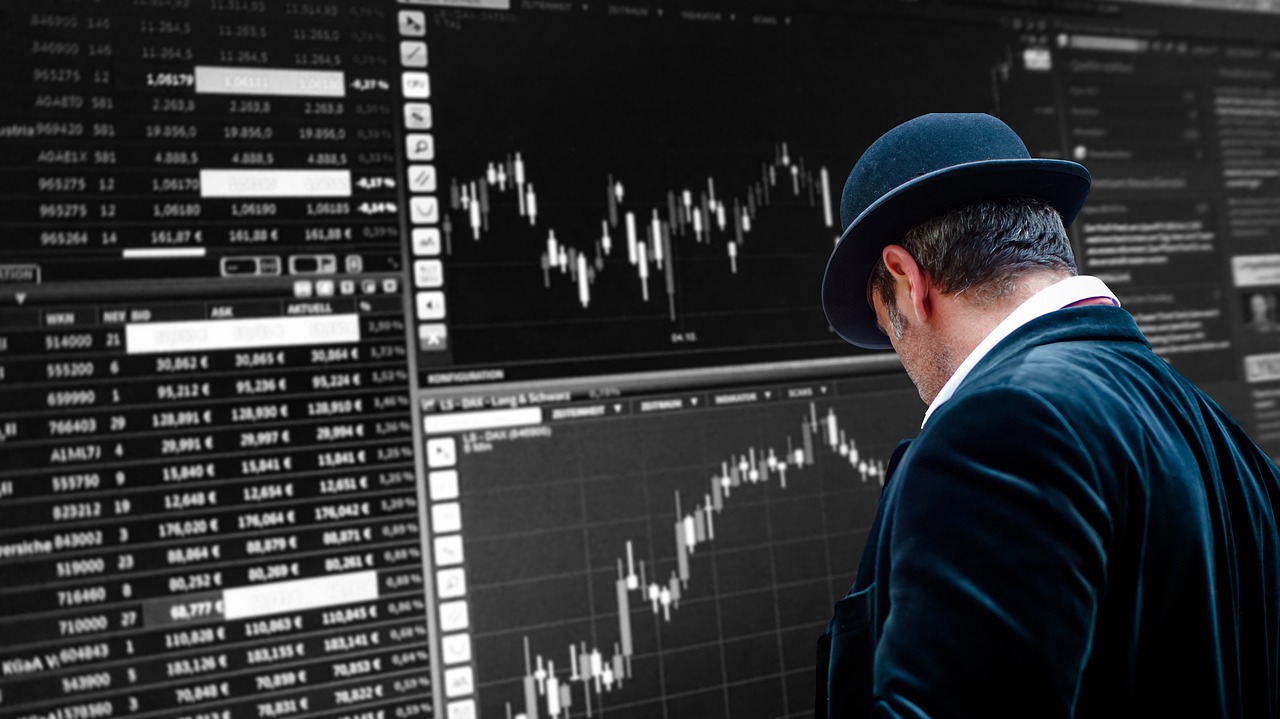
Improving Strategy Reliability
When it comes to trading, confidence is key. Imagine stepping onto a battlefield without knowing your weapon's reliability. That’s what trading without backtesting feels like. Backtesting serves as a vital tool for traders, allowing them to analyze how their strategies would have performed in the past. By diving into historical data, traders can gain insights that not only enhance their strategies but also bolster their confidence in making real-time decisions.
But how exactly does backtesting improve strategy reliability? First and foremost, it provides a clear picture of how a strategy would have reacted to different market conditions. When traders backtest, they can see the highs and lows of their strategies, identifying patterns that might not be evident in theoretical models. This process is akin to a pilot using a flight simulator; they can practice navigating turbulent skies without any real-world consequences.
Moreover, backtesting helps in reducing emotional biases. Trading can be an emotional rollercoaster, where fear and greed often dictate decisions. By relying on data-driven results from backtesting, traders can make informed choices rather than impulsive ones. This can lead to a more disciplined approach, where strategies are executed based on proven performance rather than fleeting emotions. The trust in the strategy grows, and with it, the trader's ability to stick to the plan even during turbulent market conditions.
Additionally, backtesting can lead to the identification of key performance indicators (KPIs) that are crucial for refining trading strategies. For instance, traders can analyze metrics such as:
- Win Rate: The percentage of winning trades versus losing trades.
- Maximum Drawdown: The largest drop from a peak to a trough in the strategy's equity.
- Risk-to-Reward Ratio: The potential profit compared to the potential loss on a trade.
By focusing on these KPIs, traders can not only improve their strategies but also ensure that they are making decisions grounded in reality rather than speculation. The more reliable the strategy, the better equipped a trader is to face the unpredictable nature of the markets.
In conclusion, improving strategy reliability through backtesting is not just a nice-to-have; it's a necessity for serious traders. It equips them with the knowledge and confidence needed to navigate the complexities of the trading world. So, if you're not already incorporating backtesting into your trading routine, now is the time to start!
- What is backtesting? Backtesting is the process of testing a trading strategy on historical data to determine its effectiveness.
- Why is backtesting important? It helps traders evaluate the reliability of their strategies, reduce emotional biases, and make informed decisions.
- What are common mistakes in backtesting? Common mistakes include overfitting strategies to historical data and ignoring changes in market conditions.
- How can I avoid overfitting? Maintain a balance between optimizing your strategy and ensuring it can adapt to new market conditions.

Identifying Weaknesses
Identifying weaknesses in your trading strategy is like shining a flashlight into a dark room; it reveals the hidden corners that need attention. When you engage in backtesting, you’re not just running numbers; you’re uncovering the flaws that could potentially derail your trading success. Think of backtesting as a detective’s magnifying glass, helping you scrutinize every detail of your strategy’s past performance. By analyzing historical data, you can pinpoint exactly where your approach falters and make necessary adjustments.
One effective method to identify weaknesses is to analyze the drawdowns that occur during backtesting. A drawdown is a decline in your trading account from its peak to its lowest point. By examining these periods of loss, you can assess how your strategy performs under stress. If you notice significant drawdowns that are not justifiable by the potential gains, it might be time to rethink your approach. This is crucial because a strategy that looks great on paper can often lead to emotional turmoil when real money is at stake.
Another aspect to consider is the win-loss ratio. While a high win rate might seem appealing, it’s essential to evaluate the quality of those wins. Are you making small profits frequently but incurring larger losses? This is a classic sign of a weak strategy. By performing a detailed analysis, you can create a table that juxtaposes your winning trades against your losing ones, highlighting the average profit and loss for each. Here’s a simple example:
| Trade Type | Number of Trades | Average Profit/Loss |
|---|---|---|
| Winning Trades | 15 | +$200 |
| Losing Trades | 5 | -$600 |
This table helps you visualize the effectiveness of your strategy. If your losses outweigh your gains, it’s a clear signal that adjustments are needed. Additionally, employing metrics like Sharpe Ratio can provide further insights into the risk-adjusted returns of your strategy. A low Sharpe Ratio indicates that your returns are not compensating for the risks taken, highlighting another potential weakness.
Finally, don’t forget to consider the market conditions during the periods you are backtesting. A strategy that performs well in a trending market may struggle in a sideways market. By simulating various market conditions, you can identify scenarios where your strategy may not hold up. This understanding is crucial because it prepares you for unexpected market movements, ensuring you have a more robust trading approach.
In summary, identifying weaknesses through backtesting involves a multifaceted approach. By examining drawdowns, analyzing win-loss ratios, utilizing key performance metrics, and testing across different market conditions, you can uncover the hidden flaws in your trading strategy. The goal is to turn these weaknesses into strengths, ultimately leading to a more effective and reliable trading plan.
- What is backtesting? Backtesting is the process of testing a trading strategy using historical data to evaluate its effectiveness.
- Why is identifying weaknesses important? Identifying weaknesses allows traders to refine their strategies, minimize risks, and enhance overall performance.
- What tools can I use for backtesting? There are various platforms available, such as MetaTrader, TradingView, and specialized backtesting software, that help automate the backtesting process.
- How can I avoid overfitting in my strategy? To avoid overfitting, ensure your strategy is adaptable to different market conditions and not solely tailored to past data.

Testing Multiple Scenarios
When it comes to trading, the market can be as unpredictable as a roller coaster ride. This is why through backtesting is absolutely essential. Imagine you’re a pilot preparing for takeoff. You wouldn’t just practice flying under perfect conditions, right? You’d want to be ready for turbulence, storms, and unexpected changes in weather. Similarly, in trading, simulating various market conditions helps you prepare for the unexpected, ensuring that your strategy can withstand the tests of time.
Backtesting allows traders to simulate different scenarios based on historical data. This means you can assess how your strategy would have performed during market crashes, booms, or even during those flat, boring periods. By doing this, you can gain insights into how resilient your trading strategy is. For instance, you might discover that your strategy performs well during bullish markets but falters during bearish trends. This knowledge is invaluable, as it enables you to tweak your approach before you put your hard-earned money on the line.
Moreover, testing multiple scenarios can also involve changing key parameters of your trading strategy. For example, if you’re using a moving average crossover strategy, you might want to test different timeframes or moving average lengths. This can lead to surprising revelations about what works best under various market conditions. Here’s a quick breakdown of how you might approach this:
- Market Conditions: Test your strategy during bullish, bearish, and sideways markets.
- Timeframes: Experiment with different timeframes, such as daily, weekly, or intraday.
- Parameter Variations: Adjust parameters like stop-loss levels or take-profit points to see how they affect performance.
To illustrate this further, let’s take a look at a simple backtesting scenario table that shows how a strategy might perform under different conditions:
| Market Condition | Strategy Performance | Notes |
|---|---|---|
| Bullish Market | +15% Return | Strategy performed exceptionally well. |
| Bearish Market | -5% Return | Strategy struggled; adjustments needed. |
| Sideways Market | +2% Return | Minimal gains; consider alternative strategies. |
By analyzing results from these various tests, you can make informed decisions about which aspects of your strategy need refinement. It’s like being a detective, piecing together clues to solve a mystery. Each scenario you test reveals more about your strategy’s strengths and weaknesses. So, don’t shy away from exploring different avenues; embrace the challenge! Ultimately, the goal is to create a robust trading plan that can adapt to the ever-changing landscape of the market.
Q: How often should I backtest my trading strategy?
A: It's advisable to backtest your strategy periodically, especially after significant market events or when you make adjustments to your trading plan.
Q: Can I rely solely on backtesting for my trading decisions?
A: While backtesting is a powerful tool, it should be complemented with forward testing and real-time trading to ensure the strategy performs well under current market conditions.
Q: What is the best software for backtesting?
A: There are several platforms available, such as MetaTrader, TradingView, and Amibroker, each offering unique features tailored to different trading styles.

Tools for Backtesting
When it comes to backtesting your trading strategies, the right tools can make all the difference. Imagine trying to navigate a dense forest without a map; you might get lost or miss some hidden gems along the way. Similarly, using effective backtesting tools allows traders to analyze historical data efficiently and gain valuable insights into their strategies. There are a variety of platforms available, each offering unique features tailored to different trading styles and preferences.
One popular option among traders is MetaTrader 4 (MT4). This platform is well-known for its user-friendly interface and robust backtesting capabilities. Traders can simulate trades using historical data, allowing them to evaluate how their strategies would have performed in the past. MT4 also supports automated trading, which means you can set your strategies to run on autopilot, freeing you up to focus on other important aspects of trading.
Another great tool is TradingView. Beyond its powerful charting features, TradingView offers a backtesting functionality that enables traders to test their strategies over various timeframes. The platform is particularly appealing for its social aspect, allowing traders to share their ideas and insights with a community of like-minded individuals. This can lead to collaborative improvements and fresh perspectives on strategy development.
If you're looking for more advanced options, consider Amibroker. This software is designed for serious traders who want to dive deep into quantitative analysis. Amibroker offers a comprehensive backtesting environment with extensive customization options, allowing traders to create tailored strategies and analyze their performance meticulously. However, it does require a bit of a learning curve, so it's best suited for those who are willing to invest the time to master it.
| Tool | Key Features | Best For |
|---|---|---|
| MetaTrader 4 (MT4) | User-friendly, automated trading, extensive historical data | Beginners and automated traders |
| TradingView | Powerful charting, social trading, multi-timeframe analysis | Community-oriented traders |
| Amibroker | Advanced quantitative analysis, extensive customization | Serious quantitative traders |
In addition to these platforms, there are also online resources and tools that can help you with backtesting. Websites like QuantConnect and Backtrader provide cloud-based environments where you can write and test your trading algorithms without needing to download software. These platforms are especially useful for those who prefer a more coding-oriented approach to backtesting.
Ultimately, the key to successful backtesting lies not only in the tools you choose but also in how you utilize them. The best traders combine the right software with a solid understanding of their strategies, continuously refining their approach based on the insights gained through backtesting. So, whether you're just starting out or looking to elevate your trading game, investing time in selecting and mastering the right backtesting tools can lead to more informed and confident trading decisions.

Common Backtesting Mistakes
Backtesting can be a game-changer for traders, but it's not without its pitfalls. Many traders, especially those new to the scene, often fall into the trap of common mistakes that can skew their results and lead to poor decision-making. Understanding these mistakes is crucial for anyone looking to refine their trading strategies. So, what are the most common blunders that traders make during backtesting? Let's dive in!
One of the most significant mistakes is overfitting strategies. This occurs when a trader tailors their strategy too closely to historical data, making it perform exceptionally well in backtests but poorly in real-world trading. Think of it like trying to fit a square peg into a round hole; while it might look good on paper, it just doesn't work in practice. Overfitting can lead to a false sense of security, as traders might believe their strategy is foolproof, only to find it crumbles under different market conditions.
Another common misstep is ignoring market changes. The financial markets are in a constant state of flux, influenced by a myriad of factors such as economic indicators, geopolitical events, and technological advancements. If a trader bases their strategy solely on past data without considering the present landscape, they risk making decisions based on outdated information. It's akin to trying to navigate a new city using an old map; it may get you close, but it won't lead you to your destination accurately. Traders must remain vigilant and adapt their strategies to reflect current market dynamics.
Additionally, failing to account for transaction costs can significantly distort backtesting results. Many traders simulate their strategies without factoring in the costs associated with trades, such as commissions and spreads. This oversight can lead to overly optimistic profit projections. To illustrate this, consider a scenario where a strategy appears to yield a 20% return in backtesting but, after including transaction costs, the actual return drops to 10%. This discrepancy can be devastating for a trader's confidence and capital.
Moreover, neglecting to use a robust sample size can also skew results. A small sample size may not accurately represent the market's behavior, leading to unreliable conclusions. For instance, if a trader tests a strategy on only a few months of data, they might miss crucial market events that could influence the strategy's effectiveness. A larger dataset provides a more comprehensive view and helps in identifying consistent patterns.
Lastly, many traders forget the importance of emotional discipline in backtesting. It's easy to get caught up in the excitement of a strategy that seems to work perfectly in backtests. However, when the time comes to implement it in real trading, emotions can cloud judgment, leading to rash decisions. A trader must remain disciplined, sticking to their strategy and not letting fear or greed dictate their actions.
By being aware of these common mistakes, traders can better navigate the backtesting process and develop strategies that are not only effective but also resilient in the face of changing market conditions. Remember, backtesting is not just about finding what works; it's about understanding why it works and being prepared for when it doesn't.
- What is backtesting? Backtesting is the process of testing a trading strategy on historical data to evaluate its effectiveness before applying it in live trading.
- Why is backtesting important? It helps traders refine their strategies, assess risk, and build confidence in their decision-making.
- What are some common backtesting mistakes? Common mistakes include overfitting strategies, ignoring market changes, failing to account for transaction costs, neglecting sample size, and lacking emotional discipline.
- How can I avoid backtesting mistakes? Stay aware of the common pitfalls, use a robust sample size, and maintain discipline in both backtesting and live trading.

Overfitting Strategies
Overfitting is a common pitfall that many traders encounter when developing their trading strategies. It occurs when a strategy is excessively tailored to historical data, resulting in a model that performs well on past data but fails to deliver reliable results in real-world trading scenarios. Think of it like a student who memorizes answers for a test without truly understanding the material; they may ace that specific test, but when faced with new questions, they're lost. In trading, this means that while a strategy may show impressive returns during backtesting, it can lead to significant losses when market conditions change.
One of the main reasons traders fall into the overfitting trap is the desire to achieve the best possible results from historical data. This often leads to the inclusion of too many variables or overly complex models that are not sustainable in the long run. For instance, a trader might adjust their strategy to account for every minor fluctuation in historical prices, but this level of specificity can create a model that lacks generalizability. To avoid this, it's crucial to strike a balance between accuracy and simplicity. A straightforward strategy that performs consistently across various market conditions is often more effective than a complex one that only works under specific circumstances.
To help illustrate the dangers of overfitting, consider the following table that compares two hypothetical trading strategies:
| Strategy | Backtesting Performance | Real-World Performance |
|---|---|---|
| Strategy A (Overfitted) | +50% Return | -10% Return |
| Strategy B (Balanced) | +30% Return | +15% Return |
As shown in the table, Strategy A, despite its impressive backtesting performance, fails to translate into real-world success. On the other hand, Strategy B, which maintains a balanced approach, provides a more reliable return even though its backtesting results are not as flashy. This highlights the importance of focusing on strategies that are robust and adaptable rather than simply chasing high returns from historical data.
In conclusion, while backtesting is an essential part of developing a trading strategy, traders must be cautious of overfitting. It's vital to keep strategies straightforward and adaptable to changing market conditions. By doing so, traders can enhance their chances of success in the unpredictable world of trading.
- What is overfitting in trading? Overfitting occurs when a trading strategy is too closely aligned with historical data, making it ineffective in real market conditions.
- How can I avoid overfitting? To avoid overfitting, keep your strategy simple, use a limited number of variables, and ensure it performs well under various market conditions.
- Why is backtesting important? Backtesting allows traders to evaluate the effectiveness of their strategies against historical data, helping them make informed decisions.
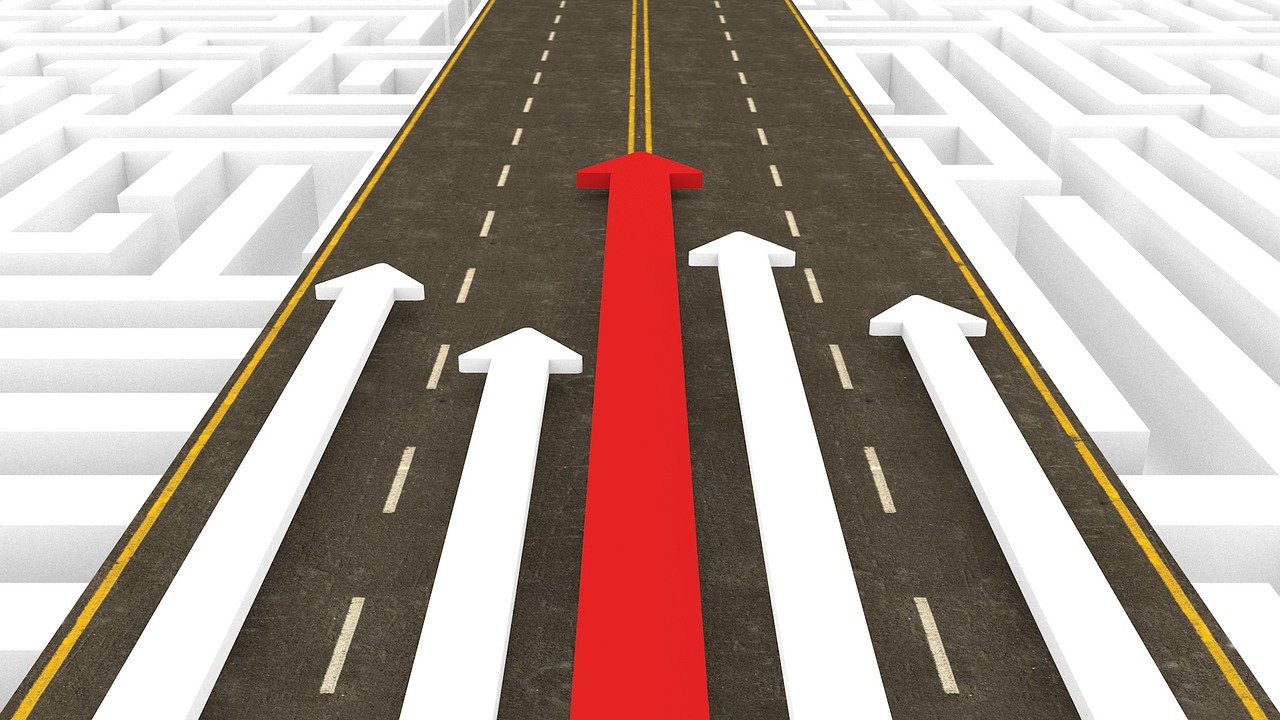
Ignoring Market Changes
When it comes to trading, one of the biggest pitfalls a trader can fall into is . The financial markets are like a living organism; they are constantly evolving, influenced by a myriad of factors such as economic indicators, geopolitical events, and shifts in investor sentiment. Just like a seasoned sailor must adjust their sails to the changing winds, traders must be agile and responsive to the dynamic nature of the markets. Failing to do so can lead to strategies that, while effective in the past, may become obsolete in the face of new realities.
Picture this: you've developed a trading strategy that worked wonders during a bull market. Your backtesting results show a consistent upward trend, and you're feeling confident. But then, the market shifts. Economic downturns, regulatory changes, or even unexpected global events can alter the landscape overnight. If you're still clinging to that old strategy without adapting to the new market conditions, you're essentially sailing into a storm without a life jacket. It's crucial to remember that past performance is not always indicative of future results.
To effectively navigate these changes, traders should regularly update their backtesting with the latest market data. This means running simulations not just on historical data but also incorporating recent events and trends. For instance, if a new economic policy is enacted, how does that affect your strategy? By continuously refining your approach, you can better prepare for unforeseen market movements.
Moreover, it’s essential to keep an eye on key indicators that signal market shifts. Here are a few critical aspects to monitor:
- Economic Reports: Pay attention to employment rates, GDP growth, and inflation data.
- Market Sentiment: Gauge investor sentiment through surveys and news headlines.
- Technical Indicators: Use tools like moving averages and RSI to spot trends.
In essence, ignoring market changes is akin to driving a car with your eyes closed. You might think you know the road well, but without being aware of what's ahead, you could face a nasty surprise. By staying informed and adaptable, traders can enhance their strategies, ensuring they remain relevant and effective in a constantly shifting environment.
Q: How often should I update my backtesting strategy?
A: It's advisable to review and update your backtesting strategy regularly, especially after significant market events or changes in economic conditions.
Q: Can I ignore minor market fluctuations when backtesting?
A: While minor fluctuations may not always require immediate changes, consistently ignoring them can lead to a misalignment with current market conditions over time.
Q: What tools can help me stay updated on market changes?
A: Consider using financial news platforms, economic calendars, and analytical tools that provide real-time data and insights into market trends.
Frequently Asked Questions
- What is backtesting in trading?
Backtesting is a method used by traders to evaluate the effectiveness of a trading strategy by applying it to historical market data. It helps traders see how their strategy would have performed in the past, allowing them to make informed decisions moving forward.
- Why is backtesting important?
Backtesting is crucial because it provides insights into a strategy's potential performance, helping to identify strengths and weaknesses. By analyzing past data, traders can refine their strategies and enhance their confidence in making trades.
- What are the benefits of backtesting?
Some key benefits of backtesting include:
- Improving strategy reliability by analyzing historical performance.
- Identifying weaknesses that can be addressed for better outcomes.
- Testing multiple scenarios to prepare for unexpected market conditions.
- What tools can I use for backtesting?
There are various backtesting platforms available, such as MetaTrader, TradingView, and NinjaTrader. These tools offer features like historical data analysis, strategy optimization, and simulation of different market conditions, making it easier for traders to backtest their strategies effectively.
- What common mistakes should I avoid in backtesting?
Some common pitfalls include:
- Overfitting strategies to historical data, which can lead to unrealistic expectations.
- Ignoring changes in market dynamics, as this can result in ineffective strategies.
- How can I ensure accurate backtesting results?
To achieve accurate results, use a robust dataset, avoid overfitting, and regularly update your strategies to reflect current market conditions. It's also beneficial to validate your findings with forward testing to see how your strategy performs in real-time.

